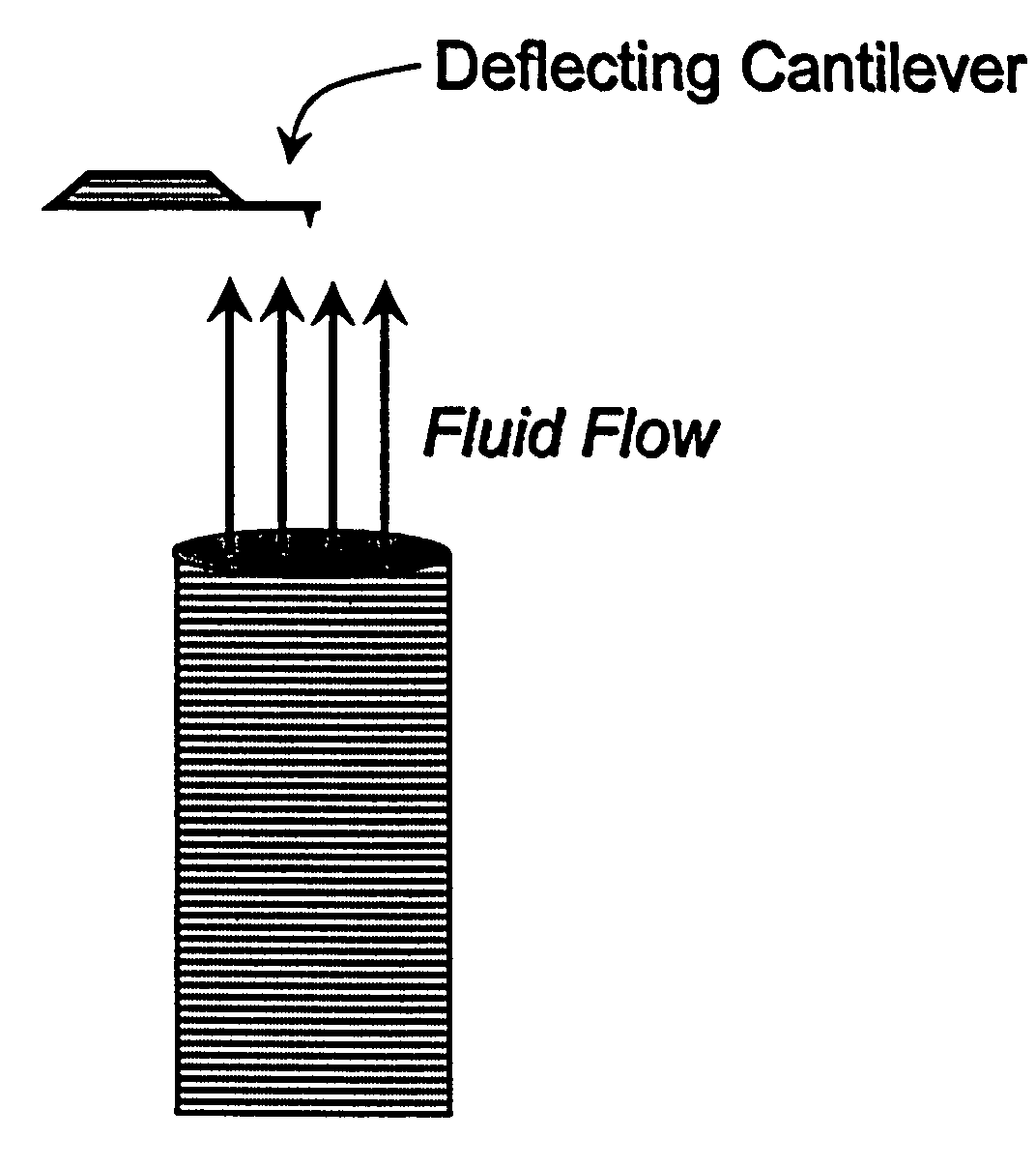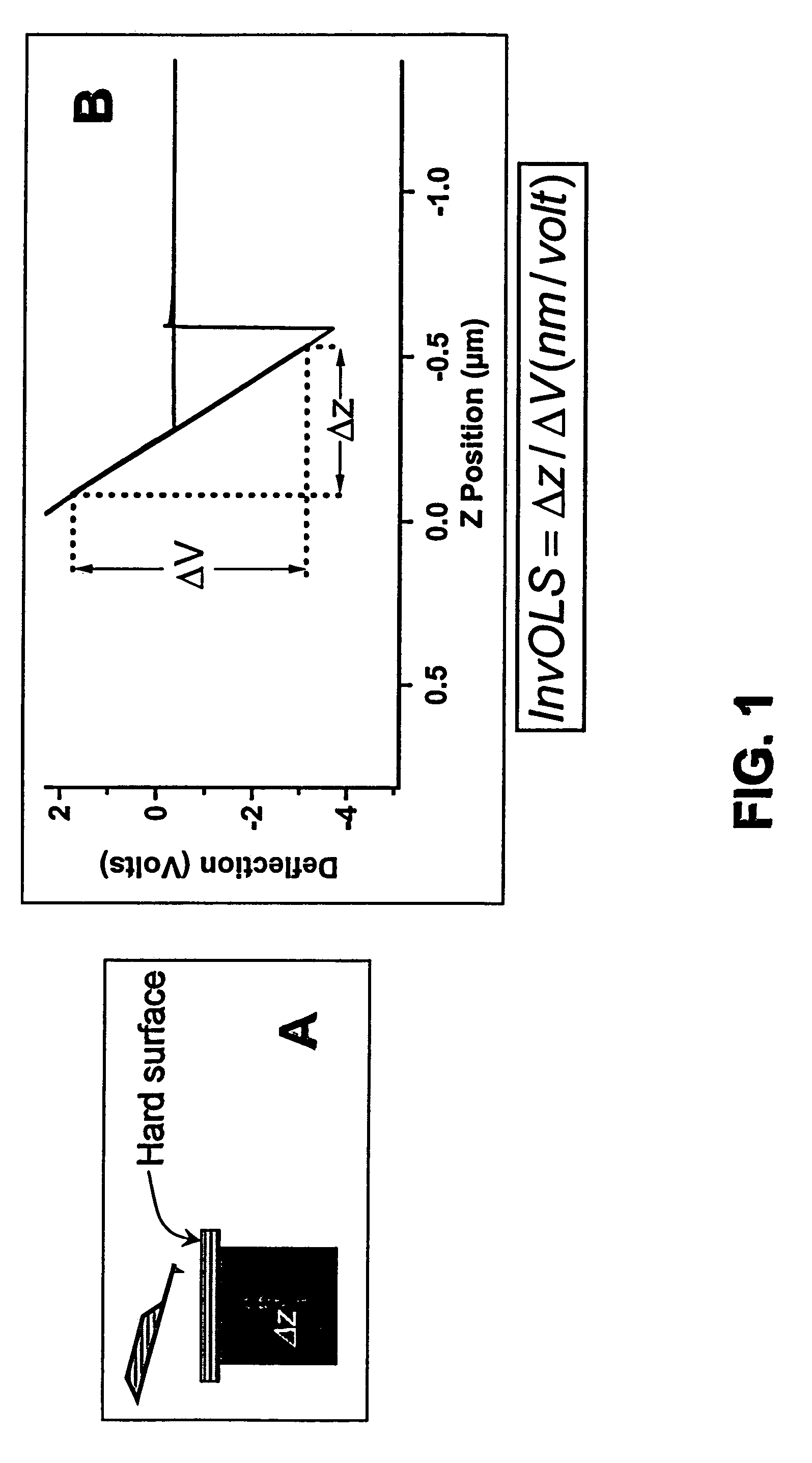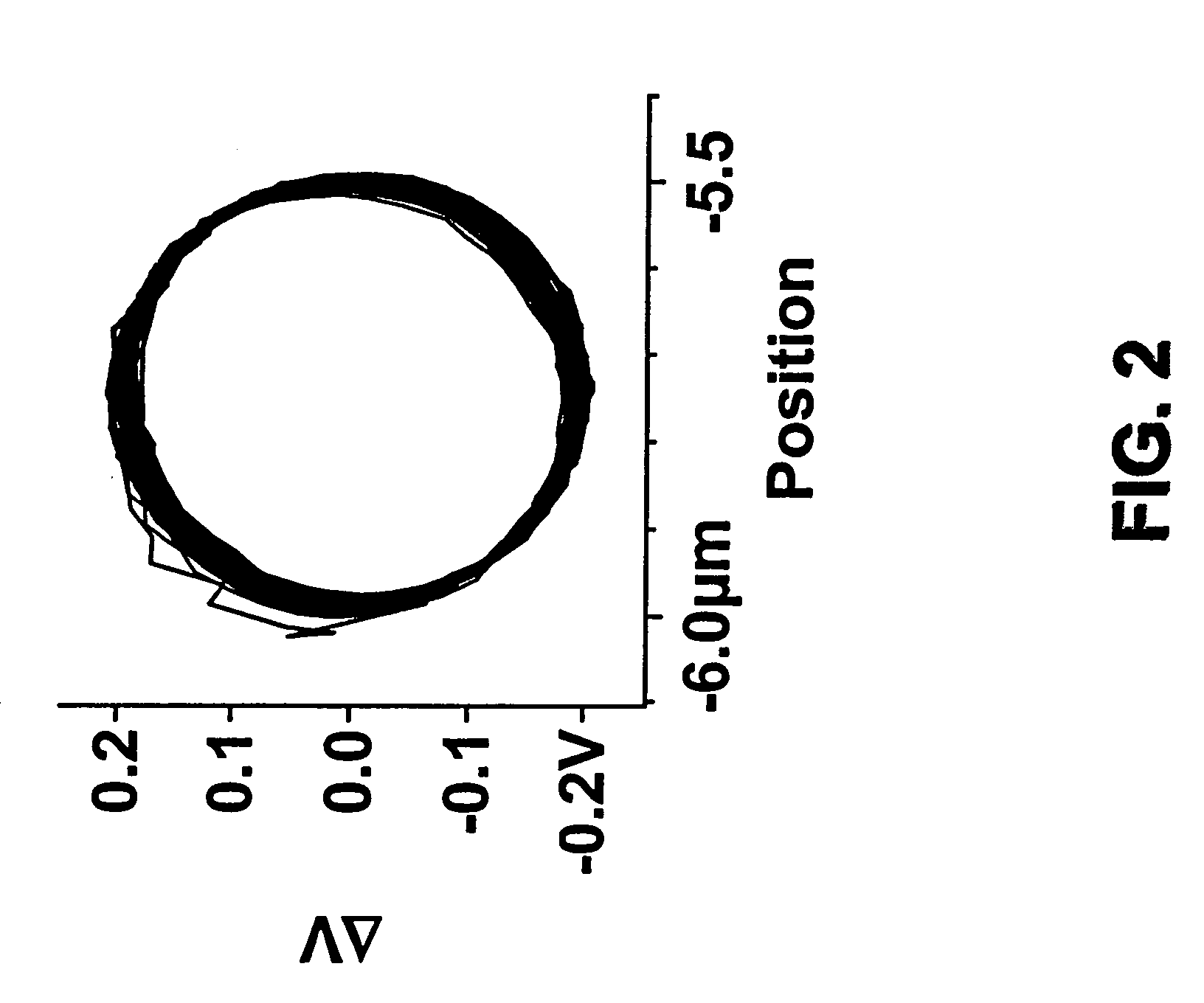Noncontact sensitivity and compliance calibration method for cantilever-based insturments
- Summary
- Abstract
- Description
- Claims
- Application Information
AI Technical Summary
Benefits of technology
Problems solved by technology
Method used
Image
Examples
Embodiment Construction
[0041]The optical sensitivity of the micromachined cantilever, the derivative of the change in cantilever deflection with respect to change in the z position of the cantilever tip (typically abbreviated as “OLS”), is the foundation for correctly interpreting the results obtained from cantilever-based instruments. FIG. 1A depicts one of the conventional methods for determining OLS. As shown in the panel, the cantilever is pressed into a hard surface (typically freshly cleaved mica) by the instrument (not shown) and moved an arbitrary distance measured by the instrument. Deflection of the cantilever resulting from this change in position is measured with optical detection means commonly employed in such instruments: low coherence light is focused onto the back of the cantilever with an adjustable focus lens and the light reflecting off the cantilever is collected by an adjustable mirror and guided onto position sensor. The position sensor provides a voltage that is proportional to the...
PUM
 Login to View More
Login to View More Abstract
Description
Claims
Application Information
 Login to View More
Login to View More - R&D
- Intellectual Property
- Life Sciences
- Materials
- Tech Scout
- Unparalleled Data Quality
- Higher Quality Content
- 60% Fewer Hallucinations
Browse by: Latest US Patents, China's latest patents, Technical Efficacy Thesaurus, Application Domain, Technology Topic, Popular Technical Reports.
© 2025 PatSnap. All rights reserved.Legal|Privacy policy|Modern Slavery Act Transparency Statement|Sitemap|About US| Contact US: help@patsnap.com



